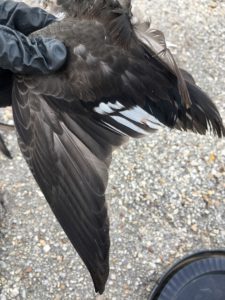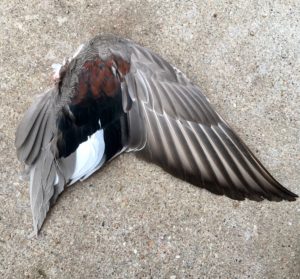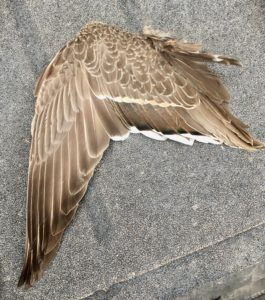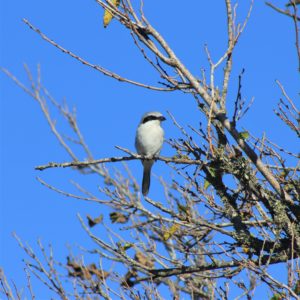Weeks 25 & 26:
As the farm only participates in the first split of the public waterfowl hunting season, which ended on December 1st, I can now provide this year’s final tally! A total of 97 harvested birds was reported via wing collection, from which I’ve sourced a few photographed specimens, including a gadwall drake wing, a northern pintail hen wing, and a bufflehead hen wing. Harvested species included ring-necked duck, gadwall, canvasback, northern shoveler, green-winged teal, lesser scaup, mallard, bufflehead, northern pintail, American wigeon, ruddy duck, and American coot. This is an exciting range of species, particularly because lesser scaup, bufflehead, northern pintail, and ruddy duck had not yet been sighted in visual surveys this season, which points to the importance of reporting by hunters as a supplementary source of data for biologists and land managers. I even had one friendly neighborhood hunter (photos cropped for anonymity) show off his take of the day, a canvasback drake, at one of my trail cameras. Cheers, mate!
I am conducting a small mammal survey this week into next at one of the four 400-meter transect lines established on the farm, and will be running 80 Sherman traps, with 2 placed every 10 meters, over 7 nights, for a total of 560 expected trap-nights (counted as the number of traps set multiplied by the number of nights deployed; used as a means of measuring effort during the sampling period). My predecessor ran surveys at these four lines at intervals from late fall into spring, and I will be following her design to continue the collection of comparable data on an annual basis. The traps are set near dusk and checked beginning at daylight. When an animal, such as a small rodent, is captured, the animal is moved from the trap into a gallon-sized Ziploc and corralled into a corner so its species and sex can be determined and the lengths of its body, tail, and hind foot can be measured while it lies flush along the bottom of the bag. The animal is then released, and the next trap is checked. I should have a few photos from this first survey for my next post.
I’ve included a few fall migration photos from around the farm, including a mixed cloud of red-winged blackbirds and brown-headed cowbirds, a perched loggerhead shrike, a green-winged teal drake at rest, and a new species for the farm’s roster, the American pipit.

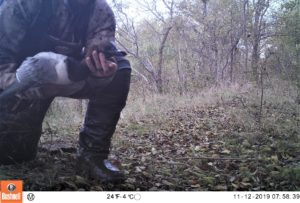
Until next time,
Dani Miller
Wildlife Biologist
Stiles Farm Foundation

